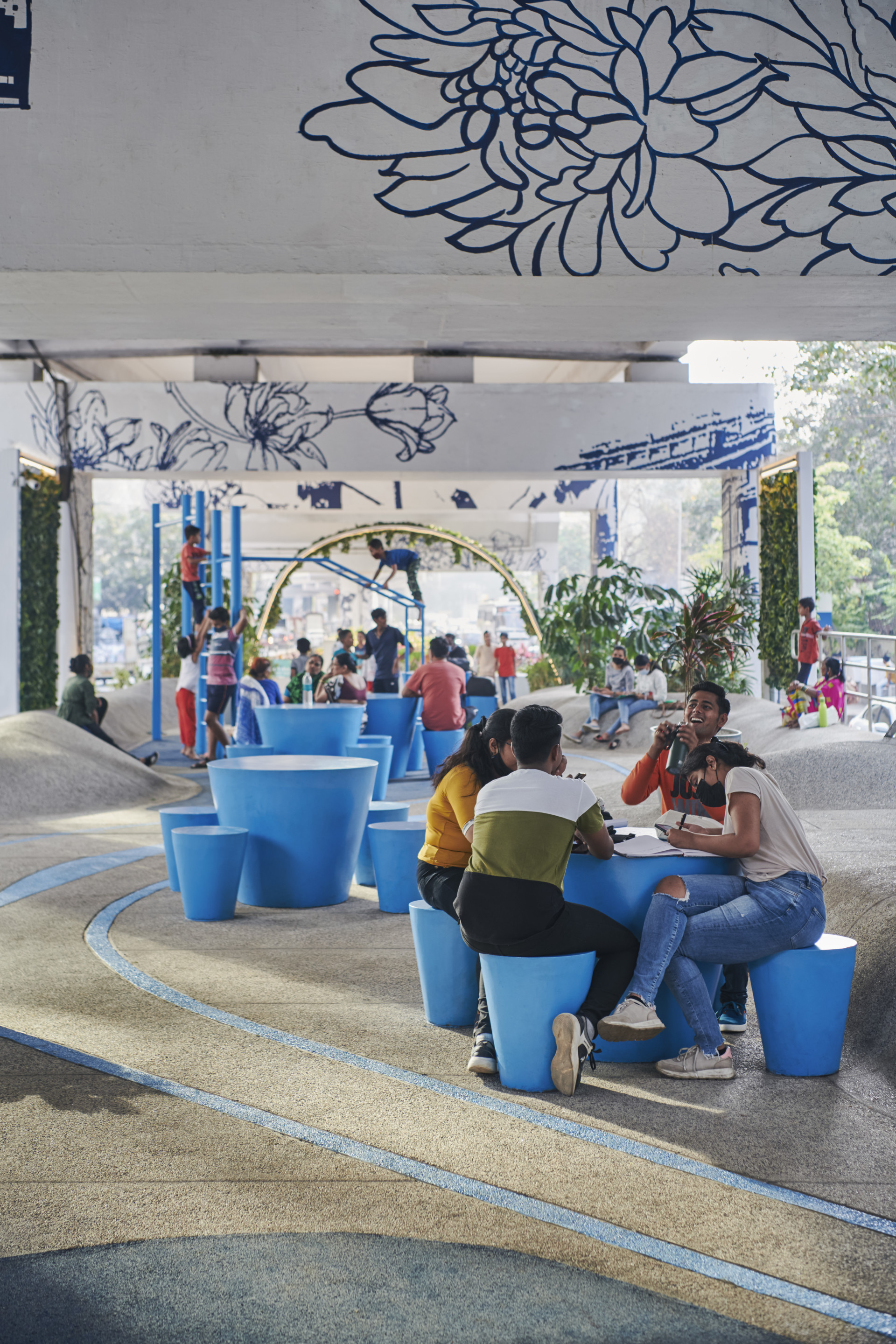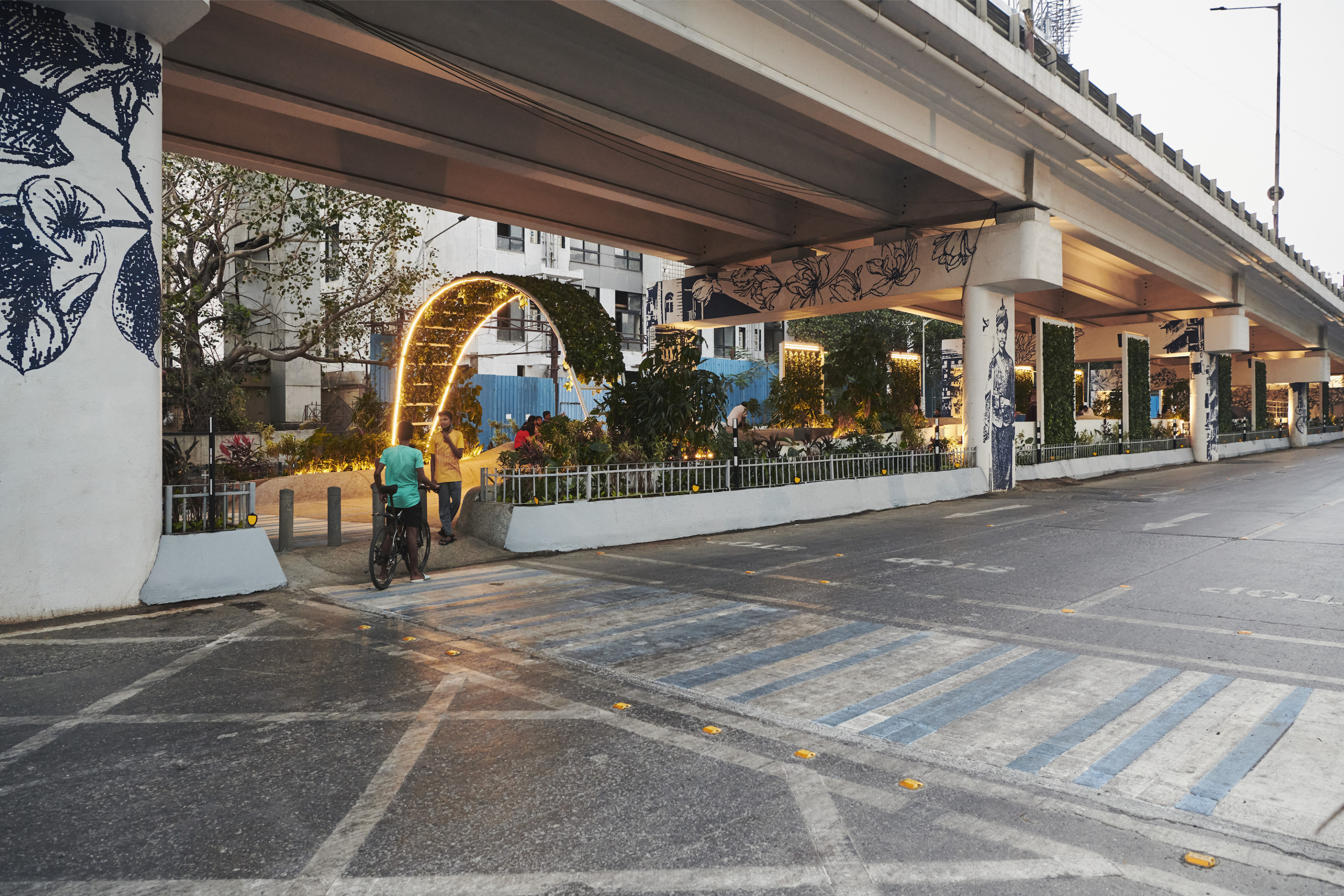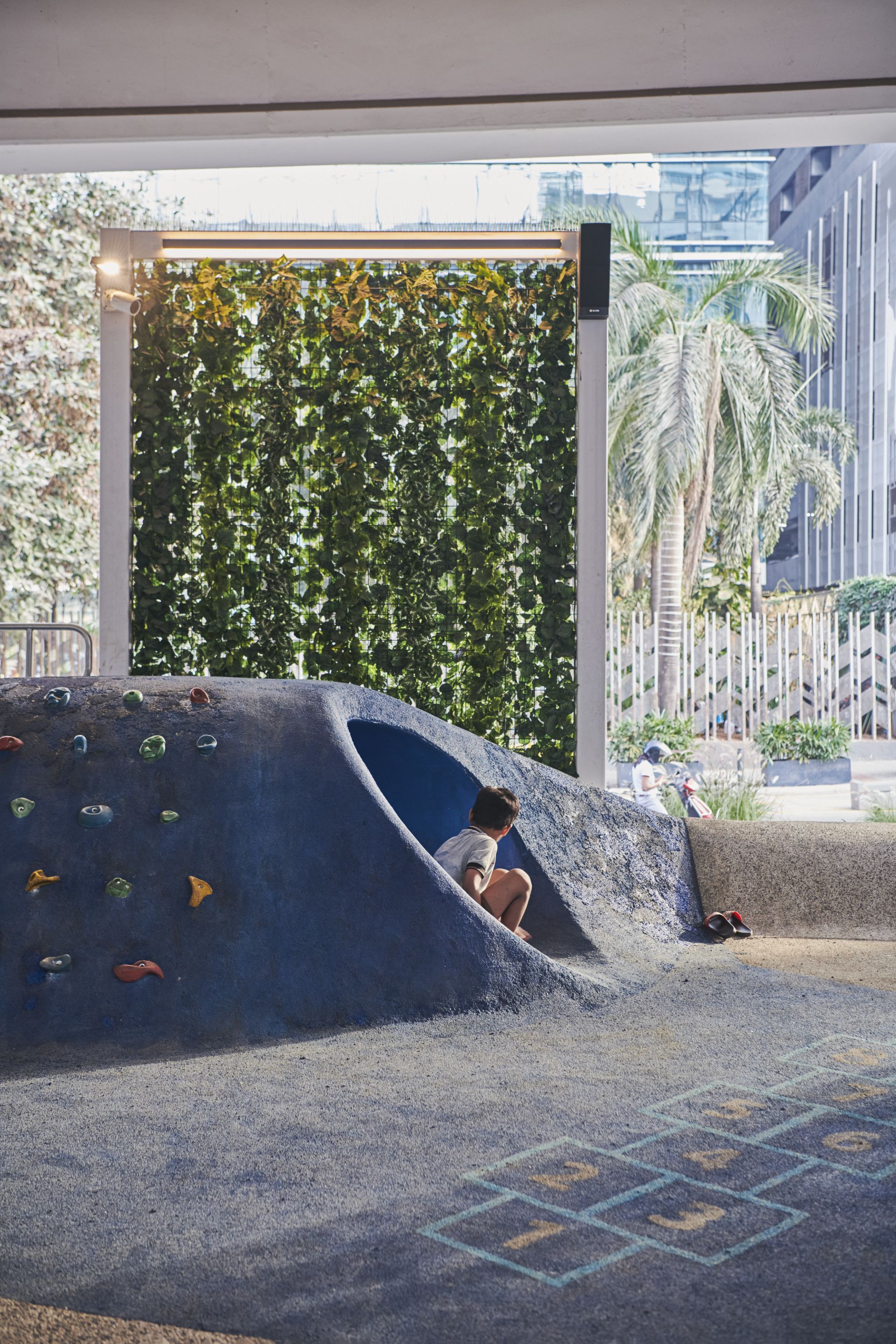A greenery-swaddled community space opens beneath an elevated highway in Mumbai
MVRDV has shared imagery of the recently completed One Green Mile, a public space activation project tucked beneath an elevated section of Mumbai’s Senapati Bapat Marg, a major roadway that stretches nearly seven miles through the heart of India’s largest city. The project, conceived by MVRDV in collaboration with local co-architect StudioPOD, sets out to offer “a repeatable approach to sustainable urban development that asserts a new benchmark for underused public spaces in the intense Indian metropolis,” per the firm.
The name of the nascent community space refers to both the lush pockets of vegetation distributed throughout the newly activated area and to the Golden Mile, an informal moniker for a stretch of Senapati Bapat Marg lined by a handful of high-profile buildings. (The highway rebrand was reportedly first pitched by Indian developer Lodha Group in 2016 during the construction of Trump Tower Mumbai in the upscale Worli district.)

As noted by MVRDV in a press release, StudioPOD, a multidisciplinary practice specializing in urban design and planning, was initially tapped to transform a roughly 2,600-foot-long stretch of streetscape running alongside Senapati Bapat Marg by Nucleus Office Parks, a subsidiary of real estate behemoth Blackstone Group; Rotterdam-headquartered MVRDV was then invited to collaborate on the “most transformative part of the scheme:” converting a swath of unused and unwelcoming space located directly underneath the highway into a multitasking, modestly sized community asset that “would address the flyover’s negative impact while responding to the area’s lack of greenery and physical amenities.”
As further detailed by the firm, StudioPOD conducted the initial work to better define the space (and its future users) while exploring potential programmatic uses. MVRDV came on board to help realize the design, including the signature blue stripes that weave through the space. A special focus was placed on establishing safe and seamless connections for pedestrians and cyclists throughout the immediate area, an effort that included creating new bike paths and crosswalks and enhanced lighting. “The area’s lighting concept works alongside programmatic elements and urban furniture features to make a recognisable place, and ensure safety around the clock,” elaborated MVRDV.
“Perhaps one day we will see the end of noisy, unpleasant highways carving up our cities, but for now they are still unfortunately a necessary evil – one you can see in Mumbai more than most cities,” said MVRDV partner Stefan de Koning in a statement. “One Green Mile asks the question: what if we expected highways to give something back to the places they cut through? A flyover can provide some shade in a hot city, and creates a small area of land that can’t be developed with tall buildings. It’s not such a crazy idea to make that into a public space.”

One Green Mile is divided into a series of greenery-flanked public “rooms,” each with its own distinct function: lounge, gym, a shaded seating area for socializing, a performance space, and a reading room. The presence of vegetation—plantings can be found on vertical screens, in planters, on retaining walls, and covering the archway that marks the main entrance to the space—promotes biodiversity in the heart of the Mumbai while also dampening noise pollution and provide a cooling effect in a heatwave-prone city that is only getting hotter. A rainwater harvesting system stores and filters water captured during the monsoon season; this water is used irrigate One Green Mile’s many plantings.
Meant to be replicated throughout Mumbai, One Green Mile is set to expand even further with plans to extend the revitalized, community-centric streetscape to span nearly 10,000-feet of the elevated highway’s more than 36,000-foot total length.

Although a greenery-swaddled community space that brings new life to a dead space located beneath/alongside transportation infrastructure is certainly new to Mumbai, similar projects have been completed or are in-progress in other cities across the globe. These cities include San Francisco, Brooklyn, Miami, Seattle, and Toronto, where the Bentway is reimagining the underside of the Gardiner Expressway via a growing patchwork of sheltered spaces that offer new recreational opportunities and singular outdoor venues for public art and cultural programming. AN visited with the Bentway team last month and will publish an in-depth look on that ongoing project later this summer.


